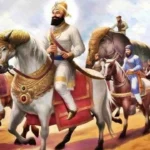6 Savan
ਦੋ ਤਲਵਾਰੀ ਬਧੀਆਂ, ਇਕ ਮੀਰੀ ਦੀ, ਇਕ ਪੀਰੀ ਦੀ, ਇਕ ਅਜ਼ਮਤ ਦੀ, ਇਕ ਰਾਜ ਦੀ, ਇਕ ਰਾਖੀ ਕਰੇ ਵਜੀਰ ਦੀ…
In Sikhism, the concept of Miri-Piri stands for the fusion of temporal and spiritual authority. It represents the notion that Sikh ought to actively participate in earthly concerns upholding justice and righteousness in addition to actively pursuing spiritual enlightenment. Guru Hargobind Sahib Ji’s emphasis on the spiritual and martial facets of Sikh life makes him particularly linked to this idea.
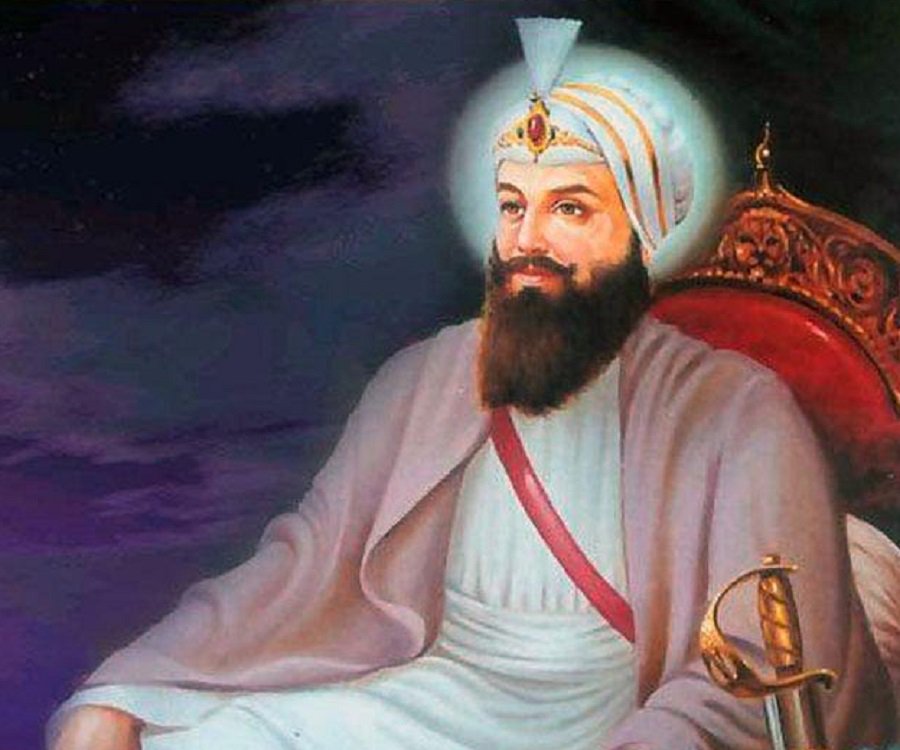
On this day, Guru Hargobind Sahib Ji formalized the concept of Miri-Piri by donning two swords, symbolizing both spiritual and temporal authority. This act marked the beginning of a new era in Sikh history, where Sikhs were not only spiritual seekers but also warriors for justice and defenders of the oppressed.
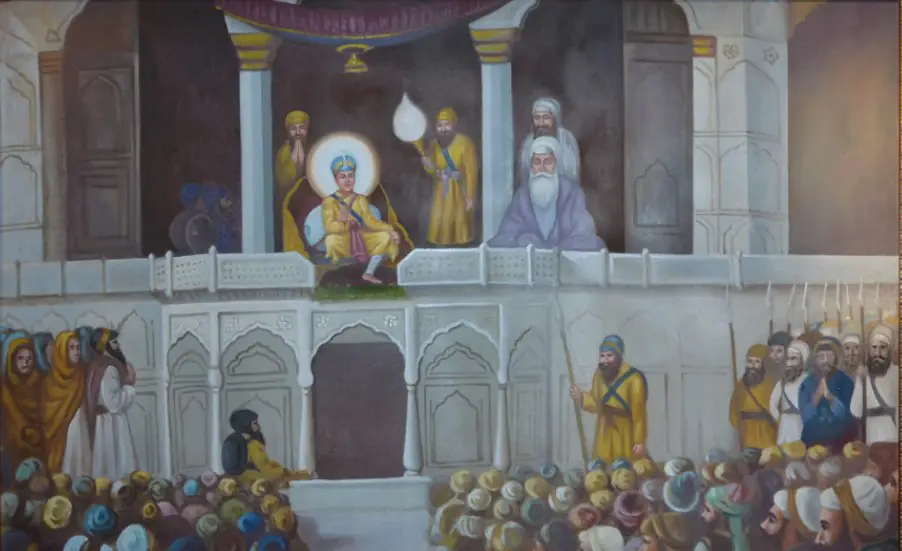
Furthermore, Guru Hargobind Sahib Ji established the Akal Takht, the temporal seat of Sikh authority, adjacent to the spiritual seat, Harmandir Sahib (Golden Temple) in Amritsar. This symbolized the unity of spiritual and temporal power within Sikhism.
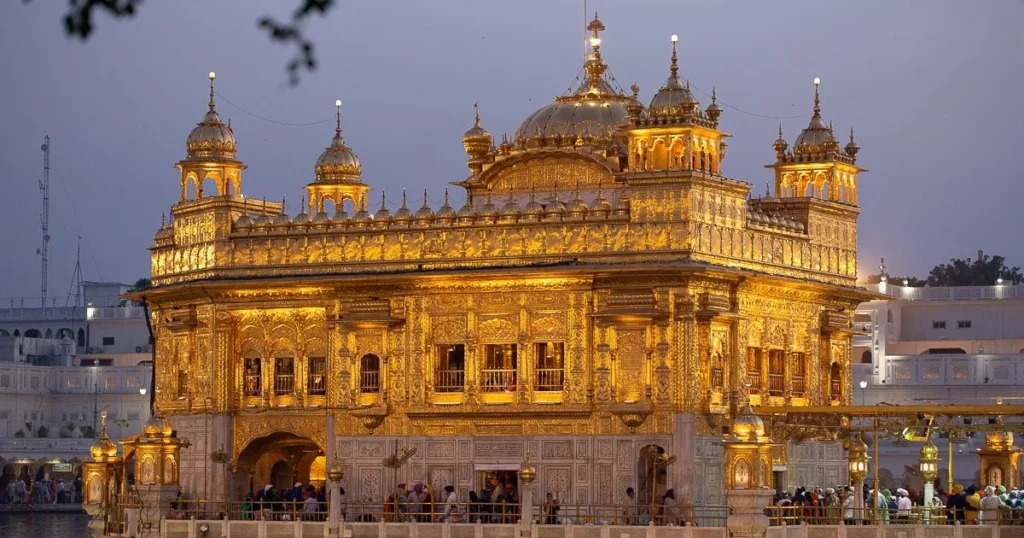
Overall, “Miri-Piri Day” commemorates Guru Hargobind Sahib Ji’s vision of a balanced and integrated life for Sikhs, where spirituality is not divorced from worldly responsibilities but instead guides them in their pursuit of justice, righteousness, and equality.
Miri – Temporal Authority
Miri refers to the temporal or worldly aspect of life, encompassing social, economic, and political activities. It signifies the importance of active participation in society while upholding spiritual values.
- Governance & Justice: Miri embodies the authority to administer and deliver justice. Sikhs are encouraged to participate actively in society, uphold justice, and ensure the well-being of all.
- Warrior Spirit: Miri is also associated with the warrior spirit of Sikhism. Sikhs are urged to be defenders of the oppressed and champions of justice, ready to stand against tyranny and injustice.
- Material Welfare: The concept extends to material well-being, emphasizing the importance of hard work, honest living, and sharing blessings with those in need.
Piri – Spiritual Authority
Piri represents the spiritual aspect of life, highlighting the importance of maintaining a strong spiritual foundation while engaging in worldly activities. It encourages Sikhs to balance spiritual growth and inner development with their external responsibilities.
- Spiritual Guidance: Piri denotes spiritual authority and leadership. Sikhs seek wisdom, moral values, and guidance from their gurus and spiritual texts on their spiritual journey.
- Moral Values: Piri encourages the development of moral and ethical values such as compassion, humility, and devotion. It emphasizes meditation, prayer, and connecting with the divine.
- Harmony: Piri teaches the importance of harmonizing spiritual and temporal aspects of life. It urges individuals to maintain their spiritual values and integrity while actively participating in worldly affair
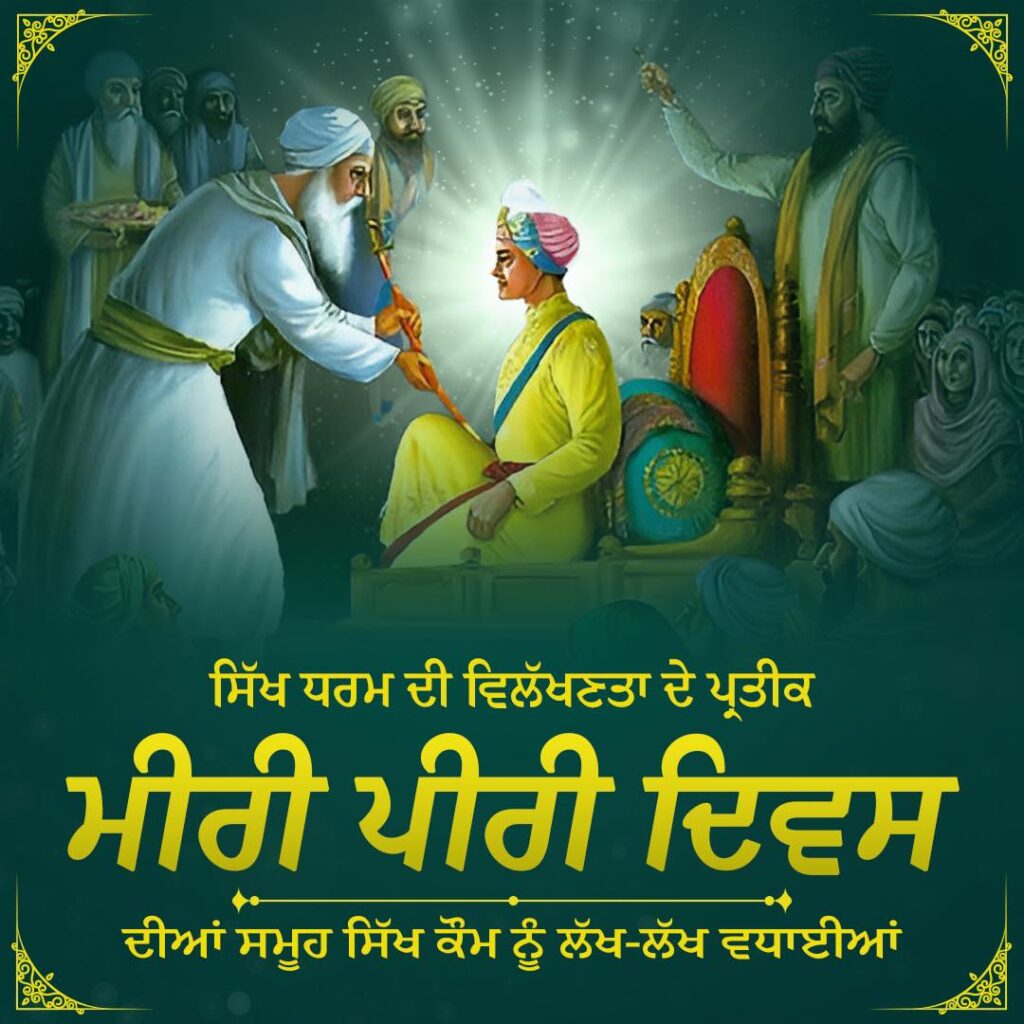
Guru Hargobind informed his followers, “In the Guru’s house, spiritual and temporal powers will be united. My rosary will be the sword-belt, and I will adorn my turban with a Kalgi” (The Kalgi was an ornamental plume worn on a turban).
History tells us that the principle of Miri-Piri is a struggle against tyranny and oppression while adhering to righteousness. After the martyrdom of the fifth Guru, Guru Arjan Dev Ji, the sixth Guru, Guru Hargobind Sahib Ji, by wielding the two swords of spirituality (Bhakti) and power (Shakti), sent a message to the contemporary tyrannical regime that its oppression and cruelty would not last much longer.
Each of the ten Sikh Gurus contributed to the development of the concept of Miri Piri:
- Guru Nanak Dev Ji, the founder of Sikhism, emphasized the importance of selfless service and equality. His teachings laid the foundation for a balanced life, integrating both spiritual and temporal aspects.
- Guru Angad Dev Ji, Guru Amar Das Ji, and Guru Ram Das Ji continued to propagate these values, further developing the community structure and emphasizing social welfare and service.
- Guru Arjan Dev Ji, the fifth Guru, compiled the Guru Granth Sahib, the central religious scripture of Sikhism, which serves as the spiritual guide for Sikhs. His martyrdom also marked a significant moment in embodying the principles of justice and righteousness.
- Guru Har Gobind Sahib Ji explicitly articulated the concept of Miri Piri by symbolically wearing two swords representing spiritual (Piri) and temporal (Miri) authority. This dual leadership highlighted the necessity of both spiritual devotion and active participation in societal matters, including justice and protection.
- Guru Har Rai Ji and Guru Harkrishan Sahib Ji continued the legacy of spiritual leadership, with Guru Har Rai Ji emphasizing compassion and healing, and Guru Harkrishan Ji exemplifying selfless service and devotion despite his young age.
Each Guru’s contributions collectively reinforced the Sikh philosophy of balancing spiritual and worldly responsibilities, ensuring that Sikhs remain spiritually grounded while actively engaging in and improving the world around them.


